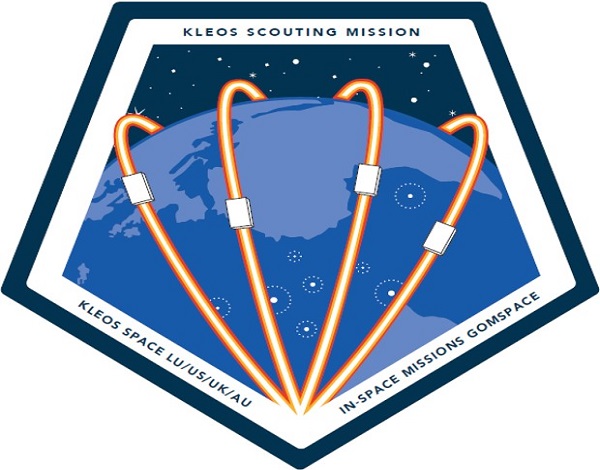 Scouting mission;
Credit: Kleos Space
Scouting mission;
Credit: Kleos Space
Kleos Space S.A., a Luxembourg-based space-powered Radio Frequency Reconnaissance (RF) data-as-a-service (DaaS) company, announced today the successful deployment of its Scouting Mission satellites (KSM1) following the launch on India’s Space Research Organisation’s (ISRO) Polar Satellite Launch Vehicle (PSLV) C49 from Chennai on Saturday.
Kleos’ cluster of four satellites has been launched from the Satish Dhawan Space Centre aboard PSLV C49 under a rideshare contract with Spaceflight Inc. They were deployed from the launch vehicle into their allocated orbit at 37-degree inclination and initial communications was established. The inorbit commissioning phase now commences to prepare the satellites to collect data over crucial areas of interest such as Strait of Hormuz, South China Sea, East and West Africa, Southern Sea of Japan and the northern Australian coast.
Kleos CEO Andy Bowyer commented: “We are very excited to have our cluster of four satellites in orbit, only three years after founding Kleos Space. This launch marks an important milestone for Kleos to start delivering our commercial and independent data to government agencies, the intelligence, surveillance and reconnaissance (ISR) community and organisations interested in locating threats, assets or those in need of search and rescue".
Kleos CTO Miles Ashcroft added that the launch was "the fruition of a massive amount of hard work by the team. They have made sure this has happened through the most unusual of times, and I am grateful for their dedication which has been exemplary. [...] We are in a good position for developing our systems to exploit data, we are making fantastic progress on the next mission (KSF1) already, these really are exciting times for Kleos”.
Franz Fayot, Luxembourg's Minister of the Economy and for Development Cooperation and Humanitarian Affairs congratulated the Kleos Space team and said: “With the launch of the first satellites, the team of Kleos has reached yet another milestone in the successful development of the company. Kleos and its activities in Luxembourg are a perfect showcase to demonstrate how space-related companies find here a nurturing and supportive environment with an established community of high-tech businesses, researchers and entrepreneurs along with access to the necessary support, services and facilities”.
François Bausch, Deputy Prime Minister and Minister of Defence and for Mobility and Public Works, also commented: “It is for me of utmost importance that all our endeavours serve to keep our world, but also space, a peaceful domain. We should therefore develop meaningful capacities for our common defence as well as for society in general. The activities of Kleos in Luxembourg and the launch of these first satellites are perfectly in line with this objective and we look forward to Kleos contributing to our efforts to build valuable data sets”.
The multi-satellite Scouting Mission system forms the foundation of a constellation that delivers a global picture of hidden maritime activity, enhancing the intelligence capability of government and commercial entities when Automatic Identification System (AIS) is defeated, imagery is unclear or targets are out of patrol range. The first scouting mission is made up of four satellites built by GomSpace in Denmark.
With the first cluster in orbit, Kleos aims to secure additional government and commercial contracts and is on track to generate first revenues in the first quarter of 2021. The development of Kleos’ second cluster of satellites is already underway and subsequent to an initial review last Friday is expected to pass PDR within the next week. This activity is on track to have satellites procured, assembled and integrated for the mid-2021 launch slot. This mission will be named Polar Vigilance Mission and is a cluster of four satellites, launching into a Sun Synchronous Orbit. The Polar Vigilance Mission will enhance the company’s RF geolocation data delivered by the Kleos Scouting Mission by covering areas north and south of the Scouting Mission 37-degree inclined orbit in addition to increasing overall coverage time in the equatorial region and increasing revenues.








